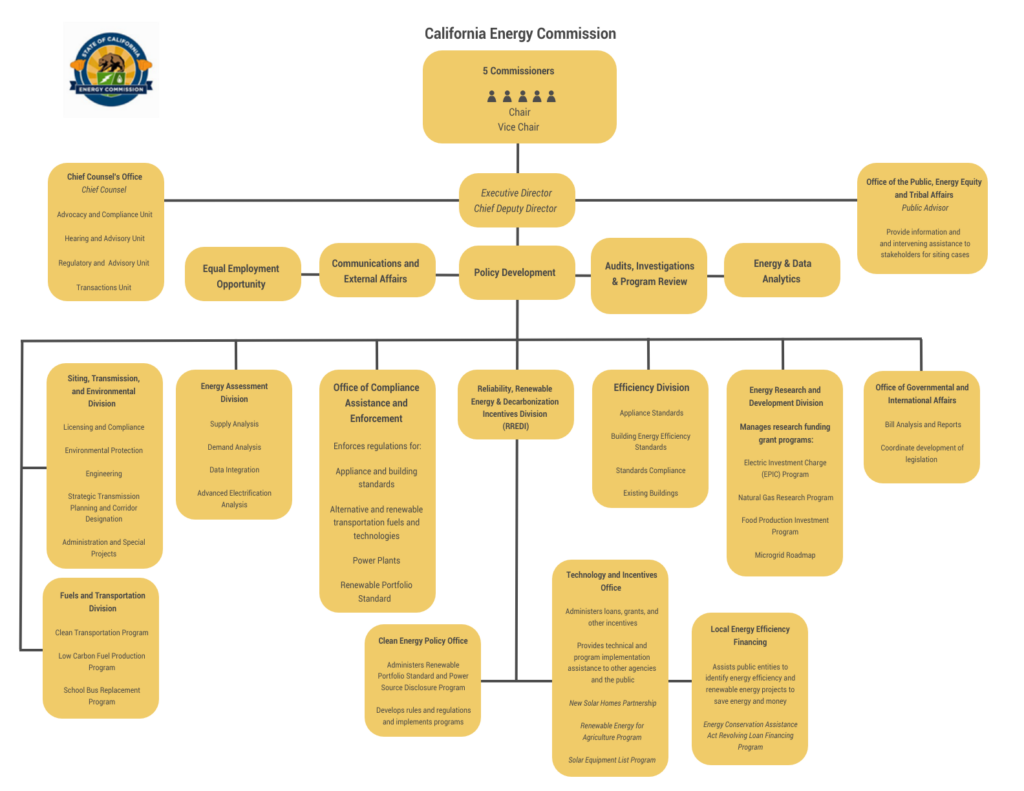Numerous state agencies play key roles in California’s climate programs and share responsibility for achieving climate justice. We provide a schematic overview of relevant state agencies and then provide more detailed diagrams of specific sets of agencies.
California has a dizzying number of climate programs, many of which have a climate justice component. In the first diagram below, we provide an overview of the central role state agencies play in climate governance, from climate action planning to program design and implementation, including various other activities they carry out with the support of other key actors. The organization charts that follow identify the departments and programs playing the most significant role. Where agencies have multiple departments, boards, or offices, we have included only those that are most relevant.
Figure 1: Overview of Climate Governance Roles and Activities

Figure 2. State Agencies Implementing Climate Programs

Figure 3. California Air Resource Board (CARB)
The California Air Resources Board (CARB) is responsible for coordinating and drafting the state’s climate scoping plans. The agency focuses on air quality and has primary authority for transportation emissions and ensuring the state meets national air quality standards.

Figure 4. Energy Agencies: California Energy Commission
The California Energy Commission (CEC) sites electricity infrastructure, invests in vehicle-charging infrastructure, and supports efforts to electrify medium and heavy-duty vehicles.

Figure 5. Energy Agencies: California Public Utilities Commission
The California Public Utilities Commission regulates utilities and, in this capacity, oversees utility electricity supply planning, energy efficiency programs, and distributed energy programs.

Figure 6. Clean Transportation Agencies
The California State Transportation Agency (CalSTA) helps develop and coordinate policies and programs of the state’s multiple transportation agencies.
The California Transportation Commission (CTC) develops programs and allocates funds for transportation infrastructure, including highways, passenger rail, transit, and active transportation.
The California Department of Transportation (Caltrans) manages highways and inter-city rail. It manages many of the programs funded by the California Transportation Commission.

Figure 7. Agencies with Cross-Cutting Objectives
Several agencies have cross-cutting authority that transcends sectoral divides. These agencies answer directly to the governor.

Figure 8. Coordination through the Strategic Growth Council
The Strategic Growth Council (SGC) leads the state’s multi-sector initiatives and fosters interagency coordination. SGC grant programs, research, initiatives, and interagency coordination seek community-centered solutions that promote equity and provide multiple benefits.
